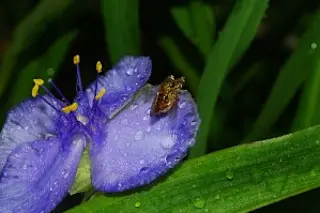Photo: flickr/DWRoseWish you could check the weather forecast more easily than looking at your iPhone or watching the Weather Channel? Yearning for more awareness of bug sex in your daily life? Then this paper is for you! The authors examined how the weather---or, more specifically, atmospheric pressure changes--affects the sexual behavior of three insect species: the curcurbit beetle, the armyworm moth, and the potato aphid. They found that any change in the atomospheric pressure caused the bugs to be less frisky, likely to protect themselves in situations involving high winds and heavy rains (not exactly a great time for bugs to do the deed). So, if you notice that the local insects are more chaste than usual, better batten down the hatches-- it means a storm's movin' in! Weather Forecasting by Insects: Modified Sexual Behaviour in Response to Atmospheric Pressure Changes "Prevailing abiotic conditions may positively or negatively impact insects ...
How to use bug sex to forecast the weather.
Explore how weather forecasting by insects reveals changes in mating behavior due to atmospheric pressure fluctuations. Discover the connection!
More on Discover
Stay Curious
SubscribeTo The Magazine
Save up to 40% off the cover price when you subscribe to Discover magazine.
Subscribe













